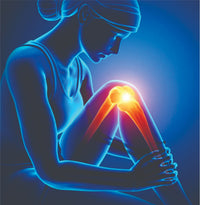Knee Joint Functions and Anatomy
Saskia OstermeierThe knee joint is the meeting point of several bones and cartilage structures, surrounded by a complex system of ligaments, tendons, and muscles.
The knee plays a pivotal role in simple daily activities like walking and sitting, as well as more complex movements required in sports and vigorous exercise.
The Basic Anatomy of the Knee Joint
When we talk about the knee joint, we're generally referring to the connection between the femur (thigh bone), tibia (shin bone), and patella (knee cap). These bones are cushioned by cartilage, a type of connective tissue that reduces friction and absorbs shocks.
But it's not just about bones and cartilage; ligaments and tendons also play crucial roles. Ligaments connect bones to bones and tendons connect muscles to bones. Together, they help maintain the knee's stability and facilitate movement.
Functions of the Knee Joint
The primary function of the knee joint is to support the body’s weight while facilitating a range of motions including walking, running, and jumping.
The knee also plays a critical role in specific movements, such as flexion (bending the knee) and extension (straightening the knee). These actions are essential for everyday tasks and are fundamental to athletic performances.

Understanding Knee Movements
There are several types of movements that the knee joint facilitates: bending (flexion), straightening (extension), and a slight rotation. These movements are possible because of the coordinated efforts of various elements within the knee joint anatomy.
For example, when you run, your knee joints flex and extend rapidly, enabling quick and fluid movement.
The Importance of Both Knees
It's crucial for both knees to function well to maintain balance and coordination. If one knee is weaker or less mobile, it can create an imbalance, causing undue stress on the other knee or other parts of the body, leading to a range of posture and movement issues.



